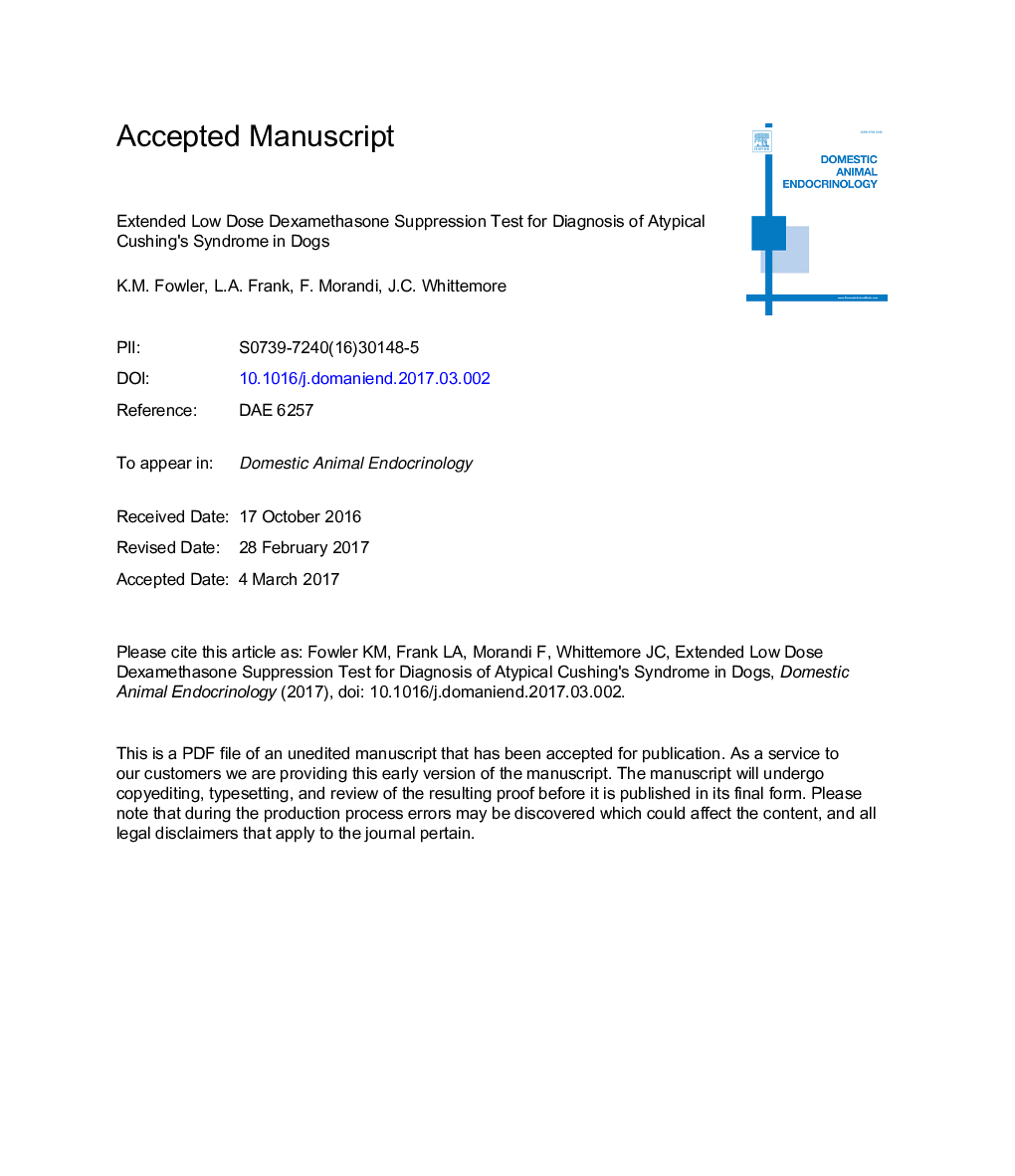| Article ID | Journal | Published Year | Pages | File Type |
|---|---|---|---|---|
| 5535377 | Domestic Animal Endocrinology | 2017 | 22 Pages |
Abstract
The purpose of this study was to evaluate extension of the low-dose dexamethasone suppression (LDDS) test from 8 h to 12 h to detect possible hypercortisolemia associated with atypical hyperadrenocorticism (AHAC). Twelve client-owned dogs were enrolled in the study: 6 healthy dogs (group 1) and 6 dogs with suspected AHAC (group 2). Baseline EDTA plasma samples were collected for endogenous ACTH determination using an immunoradiometric assay. Serum samples were collected before and at 4, 8, 10, and 12 h post-administration of 0.01 mg/kg dexamethasone IV for cortisol concentration determination via chemiluminescent assay. Mean endogenous ACTH concentration did not differ between groups (group 1: 22.4 pg/mL, group 2: 20.0 pg/mL; P > 0.2). Mean baseline cortisol concentration also did not differ significantly between groups (group 1: 3.03 μg/dL, group 2: 4.95 μg/dL; P > 0.2) nor was there any difference in mean cortisol concentration between the groups at any other time point (P > 0.2). The cortisol concentration from 1 dog in group 2 suppressed to 0.7 μg/dL at 8 h but increased to 1.5 μg/dL at 10 h and 3.7 μg/dL at 12 h post-dexamethasone. Based on results of this study, use of an extended LDDS test could not differentiate between healthy dogs and dogs with AHAC. Diagnosis of AHAC should continue to be based on prior established criteria until new testing has been identified.
Keywords
Related Topics
Life Sciences
Agricultural and Biological Sciences
Animal Science and Zoology
Authors
K.M. Fowler, L.A. Frank, F. Morandi, J.C. Whittemore,
